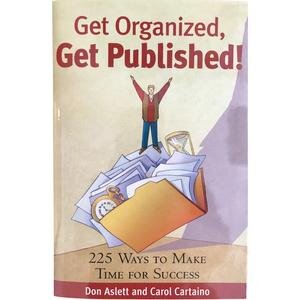My office was in the same building as a large printing plant, S. Rosenthal, in a suburb of Cincinnati, Blue Ash, Ohio. I also spent a fair amount of time traveling to New York City, however, in an effort to raise the visibility of this initially little-known publishing company in Ohio. I also traveled often to writer’s conferences in other states to give speeches and presentations on writing.
As for a typical day, most editors-in-chief have a combination of meetings with staff over problems with books in progress, meetings with other parts of the company (including meetings to decide whether or not to publish particular books and to look at roughs of possible book cover designs), time spent reviewing manuscripts, time spent looking for (and wooing) new authors, time spent editing books important enough to be edited by the editor-on-chief, and time spent trying to smooth the path of books through other departments. I had three assistant editors and a secretary.
Essentially the same criteria applied here for publishability. Well-written projects by people knowledgeable in what they were writing about, and subjects likely to appeal to a sizable number of aspiring writers or photographers or whoever the intended audience was. Many aspiring writers don’t realize that in nonfiction, what the proposed subject is may be more important than the polish of your writing style. In fiction, of course, plot, characters, and style are all.
While at Writer’s Digest I edited and produced a great number of books on all aspects of writing for publication, in fiction and nonfiction, plus a number of best-selling books by different authors on domestic subjects such as cleaning, homemaking, and decluttering. All of the books Don Aslett did for Writer’s Digest are an example, and the books done by media personality Beverly Nye.
You've co-authored several titles with cleaning/organization/simplification expert Don Aslett. Please tell us how you became acquainted with the man many think of as the "King of Clean."
One day the administrative head of the Book Division of Writer’s Digest asked me to look at a self-published book he had come across—Is There Life After Housework?, by Don Aslett. I looked it over and thought, “This is in pretty rough form, but there are some truly different ideas here.” I recommended that we publish it, and we did, and it became a bigtime best seller. It took a great deal of editorial work to bring the book up to national publication standards, but this was the first time anyone had brought the methods of the pros to home cleaning. (Aslett was a professional cleaner.)
Don, who lived in Idaho, came to Cincinnati to work on the revisions, and I persuaded him to write another book of answers to common questions about cleaning. This ended up being Do I Dust or Vacuum First?, another bestseller. By this time Don and I had forged a partnership whereby he did the rough draft, and I polished and added to it, and asked him for more to add to it.
We ended up working on 40 more books together, even after I left Writer’s Digest Books, and I got well acquainted with Don and all of his operations as well as his home of Pocatello, Idaho. He was, and still is, a very extraordinary man in the world of book authors, just about all of whom are unusual in some way. He was a little rough-edged by big-city standards, but he always made things fun.
Please describe your work as a "writer's collaborator." Does that mean co-author?
This essentially does mean coauthor, although it can take many different forms. In the case of Don Aslett, he gives me a crude draft, plus many additional “flying splinters” of related thoughts and I put it all together and add to it (and ask him to add to it) and then edit it until I have a satisfying final draft. In other cases it might mean interviewing an author on the phone, or transcribing material the author has dictated, and then editing and arranging this into a manuscript, plus getting more from the author on subjects that seem to need more fleshing out. Or some other way of going about it. In general it means doing a lot more than just editing what the author has drafted.
As editor for two of the world's publishing giants, you no doubt saw the need for revisions, deletions, enhancements, etc. in the work presented to you. What were the most common mistakes and omissions made by authors? What advice would you give today to a writer with "best-seller" in his/her sights?
One of the most common mistakes, when writing nonfiction, is forgetting to tell the reader some rather basic things about your subject that you may not think of because they are second nature, taken for granted by you. Overlong and overcomplicated sentences are another common error, as is overusing the same word or words.
As for advice for writers with “best-seller” in their sights, one thing I would say is to not just try to copy or emulate best-sellers you are aware of, but to write what you really know about, what is a passionate interest for you. If you do that, your book has a better chance of selling, and selling well.
How long did it take you to write It Happened in Ohio, and how did you go about getting it published?





